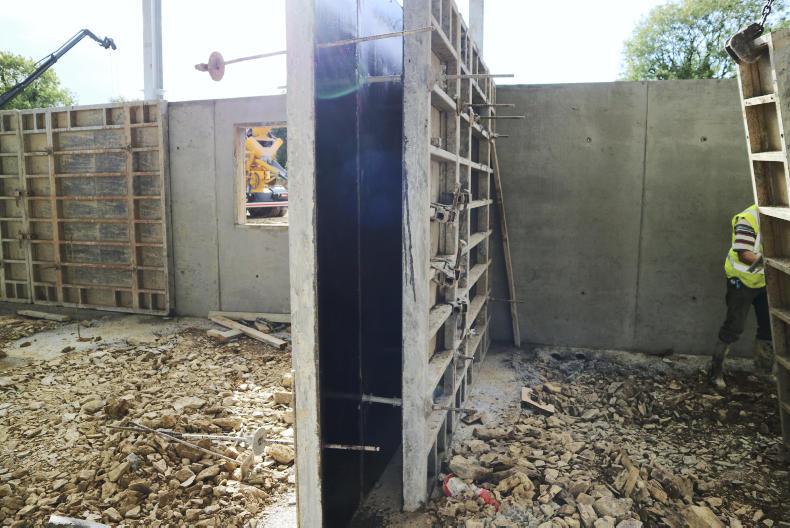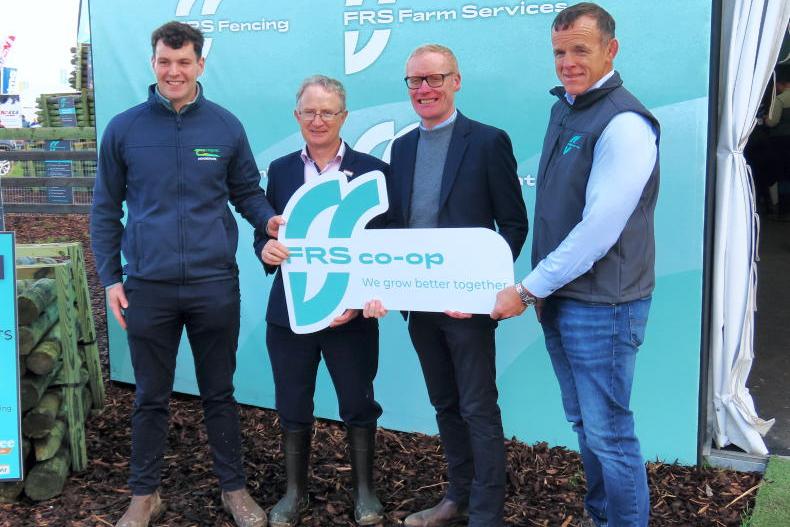Virtually all farmers can appreciate a well-hung gate. There is nothing more wearisome than a sagging gate that needs all the persuasion one can muster to open. Erecting a gate is not difficult once you are prepared. To begin with you must buy the materials. On the right hand we outline the main gate post options. For our demo, Damien O’Dowd from FRS (left) Fencing picked a steel post because it should have a long lifespan and it is the most popular in his area. An ordinary 13ft field gate was also purchased.
Damien than set about preparing the site. Because the gate was 13ft long he needed to dig two holes 13.5ft apart centre to centre. The holes are 600mmx600mmx600mm, there is scope to make the holes narrower to reduce manual labour involved with digging and filling in when the job is complete. In peaty ground Damien says it is a good idea to add a concrete foundation at the base of the hole to prevent the post from sinking over time.

Next, Damien set up the main hanging post. He placed this post in the centre of the hole. The ground rises in the field side where the gate was being erected. He had a good method to make sure this rise would not prevent the gate opening fully when it is erect. “I find the best way to make sure the gate will open OK is by using a straight edge length of timber,” he said. He places one end of the straight edge on top of the bottom gate hanger. By holding the other end level and moving the straight edge in the direction the gate will swing he can check if it makes contact with the ground. If it does, it can be hung higher or the ground can be levelled.

When the hanging post position is established, it is ready to be set in concrete. Damien uses a quick-drying pre-blended concrete that comes in 20kg bags costing €5 including VAT. Damien simply adds water to the mix when he tips in the bags around the post. The post is constantly monitored to make sure it is level. Three to four bags are usually enough to hold the post solidly but more can be added. The mix is tamped down to remove any air pockets as it is laid. Once the concrete is added and given 10 minutes to set, the post is ready for the gate to be hung.

With the gate hung, it is time to position the closing post. Having the gate in position makes this much easier. The closing post should be located so the gate can be latched soundly and it should not obstruct the gate opening. The closing post should be put in level and at the correct height to allow the gate to be latched easily.

Once the concrete is set, the clay can be back filled around both posts. Damien says on a calm day a gate should stay still at any given position. If it doesn’t it may be a sign it has not been hung level. The treaded bar hanger can be adjusted a little to help level the gate if needs be.

Posts: the options
Damien displayed the different options farmers have for gate posts. Retail prices from FRS.
1. A galvanised gate post which Damien went with in the demo. The galvanised hanging post costs €64 including VAT and the closing post costs €48 including VAT.
2. A secondhand crash barrier pillar which costs €40 including VAT. This is made from heavy duty steel and will have a long lifespan.
3. The RSJ (second-hand steel stanchion) is commonly used by farmers. Damien says if ground is suitable it can be driven into the ground but often the preferred method is to dig a hole and set it in concrete. This 8ft RSJ which is not galvanised costs €44 including VAT.
4. A 8ft heavy duty PDM post is an excellent way to hang a gate when ground is suitable. It costs €35 including VAT. A non-cresoted tanilised post costs €18 including VAT but the life expectancy will be far shorter.
5. Some people recycle an old railway sleeper, point the end and drive it into the ground with a post driver while others will put concrete around it. The railway sleeper costs €30 including VAT.
6. PDM square posts are normally used to hang fancier timber gates at farm entrances. These cost €65 including VAT.















SHARING OPTIONS